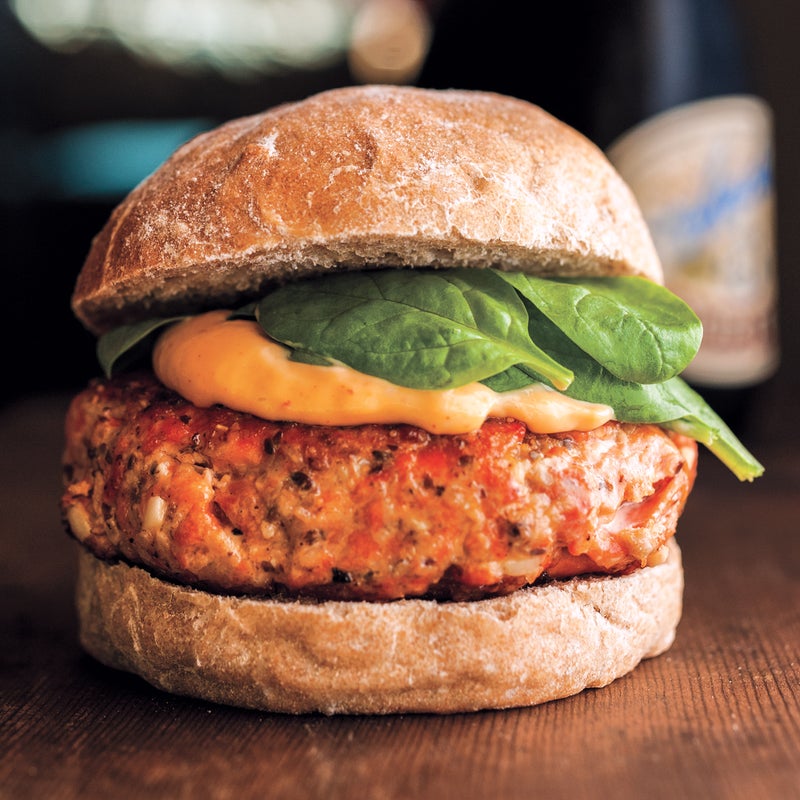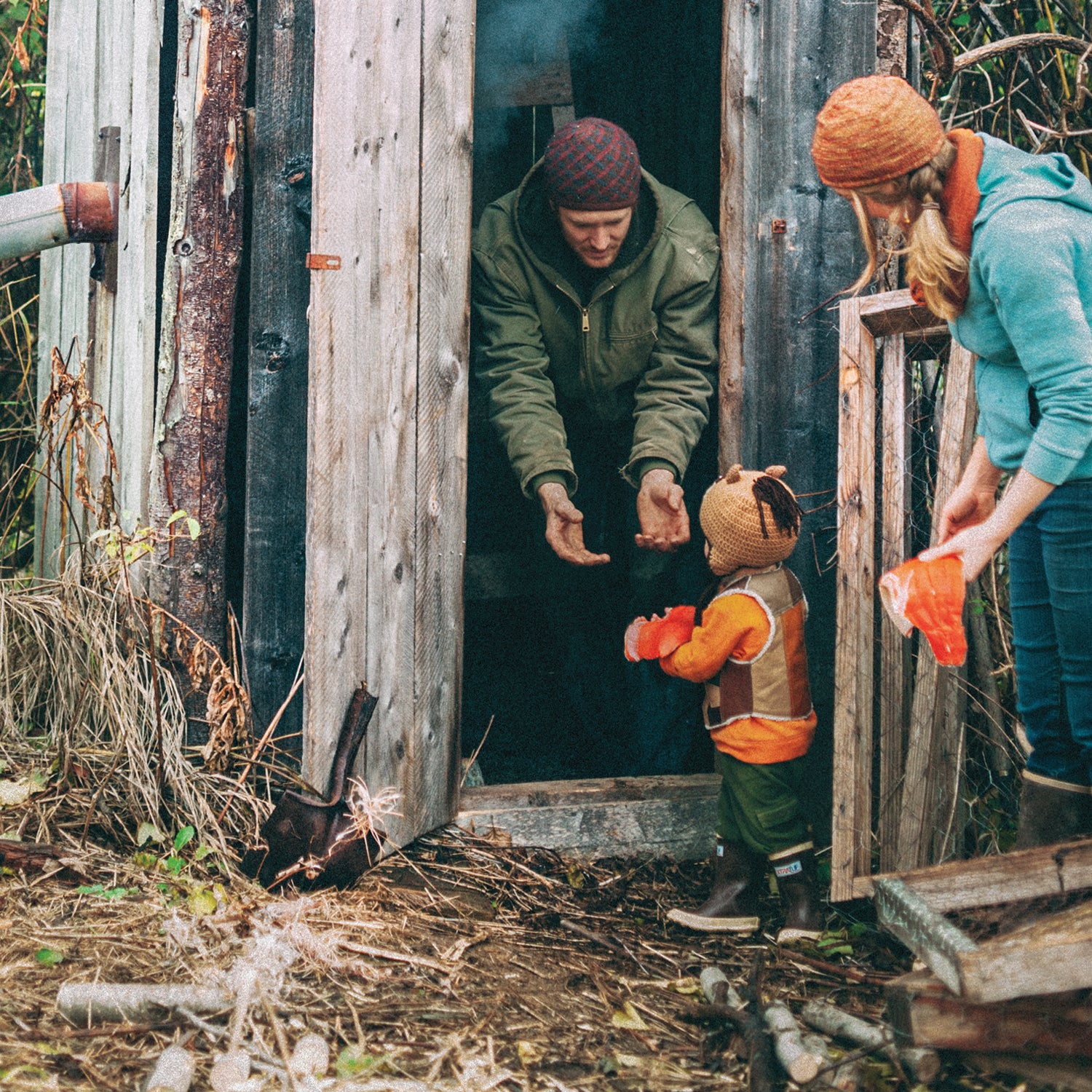Confession: I wanted to hate Eve and Eivin Kilcher, the stars of the reality show . A cursory glance through the coupleÔÇÖs new cookbook, , showed their back-to-the-land life as way too perfect. It was like the Facebook version of homesteading, where only the highlights made the cutÔÇöpictures of perfectly coifed salads, composed egg dishes, and their two harmonious children helping around the farm.
After a year of trying to grow the majority of my produce at home, I can tell you one thing: homesteading is no picnic. IÔÇÖm pretty sure every other word out of my mouth while gardening is something you wouldnÔÇÖt want your cherubic (and oh-so-helpful) toddler to hear.┬áBut as┬áI spent time with the book, I realized that IÔÇÖd judged it too quickly. There are some serious notes about how difficult this lifestyle is. By the end of my interview with the couple, I actually liked them. My snarky, hatchet-job piece was ruined.┬á
The Kilchers come from a tradition of homesteading. Both Eve and Eivin grew up not far from their current plot of land outside Homer, Alaska, where they raise most of their food. The Discovery Channel started filming the family in 2011, and┬áthe show has┬ábeen a hit. Season six premiered in mid-October, with viewers tuning in to gawk at the lack of indoor plumbing, the interpersonal needling that comes standard with any family, and the now-foreign-to-most-of-us act of raising and killing your own dinner. Because a show about growing your own food must include shots of homey dishes, it wasnÔÇÖt long before a literary agent called and asked if theyÔÇÖd considered writing a cookbook.┬á
Neither Eve nor Eivin have a professional cooking background, and thatÔÇÖs clear in the recipes.┬áTheyÔÇÖre simple, easy to follow, and keep dish usage to a minimumÔÇöyou can tell that after a long day of working in the garden, Eve is careful not to press every tool in the kitchen into service. This is great for new cooks, but more experienced readers may feel like they already have similar recipes in their arsenal, as most of us can make a quiche or coleslaw or kale salad without a recipe.
Besides, the point isnÔÇÖt the recipes┬ábut┬áthe land.┬áWhere other cookbook writers┬áopine on culinary traditions and technique,┬áEve and Eivin┬áwrite┬álove notes to the state of Alaska. In fact, many recipes call for ingredients you wonÔÇÖt even find outside of Alaska. Eve did this on purpose, hoping youÔÇÖll forage for whatever your neighborhood has to offer and substitute it in. Good luck, Manhattanites.
The best parts of the book are the small and genuine anecdotes about homestead life. There are lines about the hardships of keeping chickens in a place where predators abound┬áand fun stories about when things go wrong in beekeeping (this┬áinvolves a suit with a hole in the nether regions). Some of the tales are a little too polished: Eve describes potato gardening as ÔÇťdigging up Spanish doubloons or Moroccan jewels.ÔÇŁ Personally, I would describe this activity as sweaty, dirty, and best followed by a lot of cold beer. And the paragraphs about starting an orchard while starting a family are so cloying, they┬ámight give you diabetes.┬á
But the book captures some of the wonders of raising things yourself. Only a single letter separates terror from terroir, and Homestead Kitchen is a great read for days when youÔÇÖre feeling more terrorized by your plot than anything else. Sure, youÔÇÖll roll your eyes at points, but the KilchersÔÇÖ passion for self-reliance is infectious. ┬á
And for the record, Eve struggles in the garden too. ÔÇťI commit mass murder on a daily basis,ÔÇŁ she told me when we got onto the topic of plant pests. ÔÇťAnd my body is wrecked from gardening.ÔÇŁ
That makes two of us, Eve. 
Salmon Burgers
Makes four burgers.

Ingredients
- 3 tablespoons mayonnaise
- 1 tablespoon Sriracha sauce
- 2 pounds boneless, skinless salmon
- 2 large eggs, beaten
- 2 garlic cloves, minced
- 1/2 medium onion, minced
- 2 teaspoons dried dill, or 2 tablespoons chopped fresh dill
- 1 tablespoon Dijon mustard
- 1/4 cup fresh breadcrumbs
- 1/4 cup oat bran
- 2 tablespoons ground flaxseed
- Salt and black pepper
- 2 tablespoons grapeseed oil
- 4 whole wheat burger buns, or 8 slices of bread
- ÔÇőÔÇő3 cups fresh arugula
Preparation
- In a small bowl, mix the mayonnaise and Sriracha until smooth; set aside.
- Cut the salmon into large cubes and place in a resealable plastic bag. Pound the salmon with a meat mallet or rolling pin until pulverized. Place the tenderized salmon in a large bowl and add the eggs, garlic, onion, dill, mustard, breadcrumbs, oat bran, and flaxseed. Season with salt and pepper. Use your hands to combine gently but thoroughly.
- Form the mixture into four equal patties.
- In a large cast-iron skillet, heat the oil over medium-low heat. Cook the patties for four to five minutes per side or until golden brown.
- Serve the salmon burgers on buns topped with some of the spicy mayo and a handful of arugula.
Recipe note: We like the kick of Sriracha-spiked mayo on these burgers, but tartar sauce is a great nonspicy option. Treat these as you would any burger and add the toppings of your choice.


